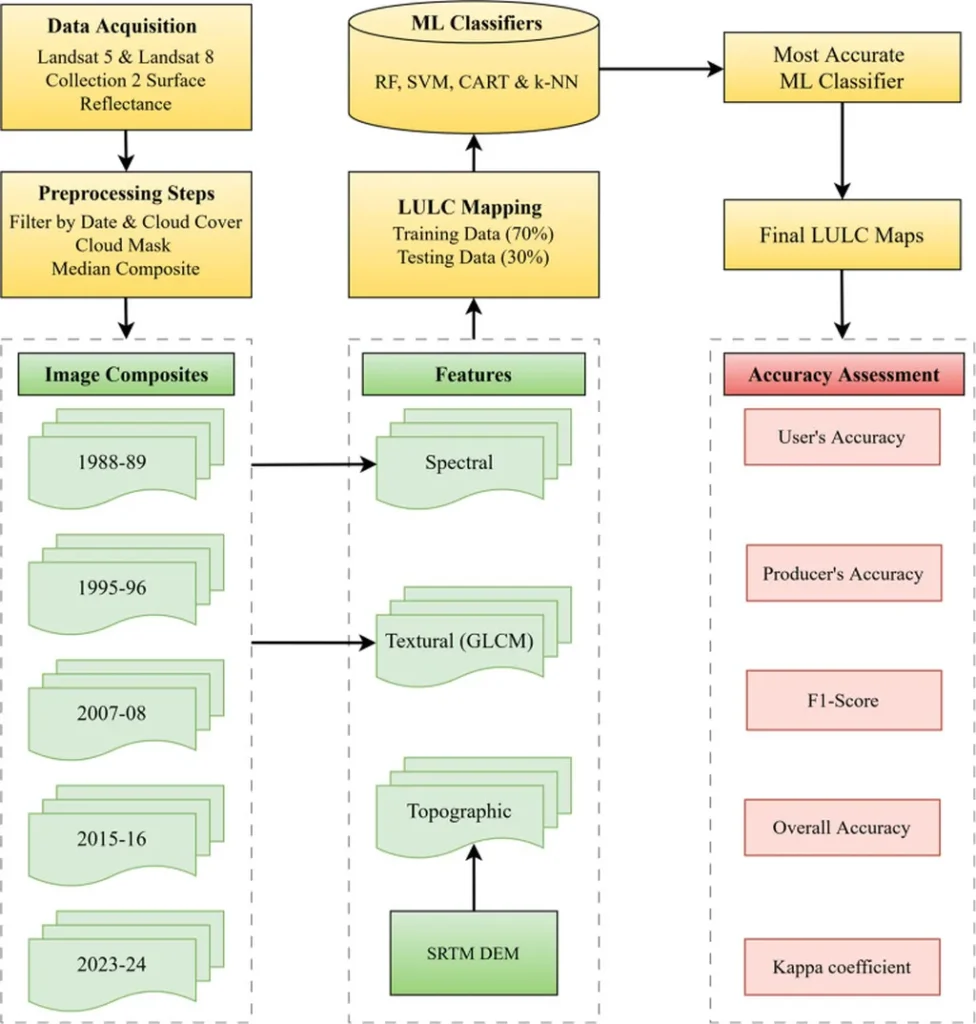In the heart of Bangladesh, the city of Barishal is grappling with a silent yet potent challenge: the relentless rise in land surface temperatures, a consequence of rapid urbanization. A recent study published in *Scientific Reports* (translated from Bengali as “Scientific Reports”) has shed light on this pressing issue, offering insights that could reshape urban planning and energy strategies in the region.
Led by Irteja Hasan from the Department of Coastal Studies and Disaster Management at the University of Barishal, the research employs advanced GIS and remote sensing techniques to dissect the intricate relationship between land use, land cover (LULC), and land surface temperature (LST). The findings are stark: between 1998 and 2024, the mean LST in Barishal City Corporation (BCC) has surged by a staggering 5.75°C, with temperatures peaking at 42°C in 2024.
“The expansion of built-up areas has been a significant driver of this temperature increase,” explains Hasan. “Our analysis shows an 11.29% growth in built-up zones, coupled with a decline in vegetation and agricultural land. This shift has profound implications for urban heat islands and public health.”
The study’s correlation analysis underscores the role of different land cover types in modulating temperatures. Built-up areas, characterized by high Normalized Difference Built-up Index (NDBI) values, are positively correlated with LST, while regions with abundant water bodies, indicated by high Normalized Difference Water Index (NDWI) values, exhibit a cooling effect. The relationship between the Normalized Difference Vegetation Index (NDVI) and LST is more nuanced, with water bodies introducing a positive correlation in otherwise negative scenarios.
Looking ahead, the projections are sobering. If current urban expansion trends persist, approximately 5.89% of BCC’s area could experience temperatures exceeding 38°C by 2033, rising to 7.93% by 2042. These escalating temperatures pose significant health risks, with heat exhaustion, respiratory problems, and dehydration emerging as common ailments. Vulnerable populations, including children, the elderly, and outdoor workers, are particularly at risk.
For the energy sector, these findings present both challenges and opportunities. The increasing demand for cooling solutions could drive innovation in energy-efficient cooling technologies and renewable energy integration. “Understanding these dynamics is crucial for developing mitigation strategies that align with sustainable urban development goals,” says Hasan.
The study’s implications extend beyond Barishal, offering valuable insights for other rapidly urbanizing regions. By integrating LST predictions into urban planning and energy policies, cities can proactively address the challenges posed by urban heat islands. As Hasan notes, “This research is a stepping stone towards creating resilient, sustainable urban environments that prioritize both human health and ecological balance.”
In a world grappling with climate change, the lessons from Barishal serve as a timely reminder of the intricate interplay between urbanization, temperature, and health. As cities continue to expand, the need for data-driven, forward-thinking strategies has never been more critical.

